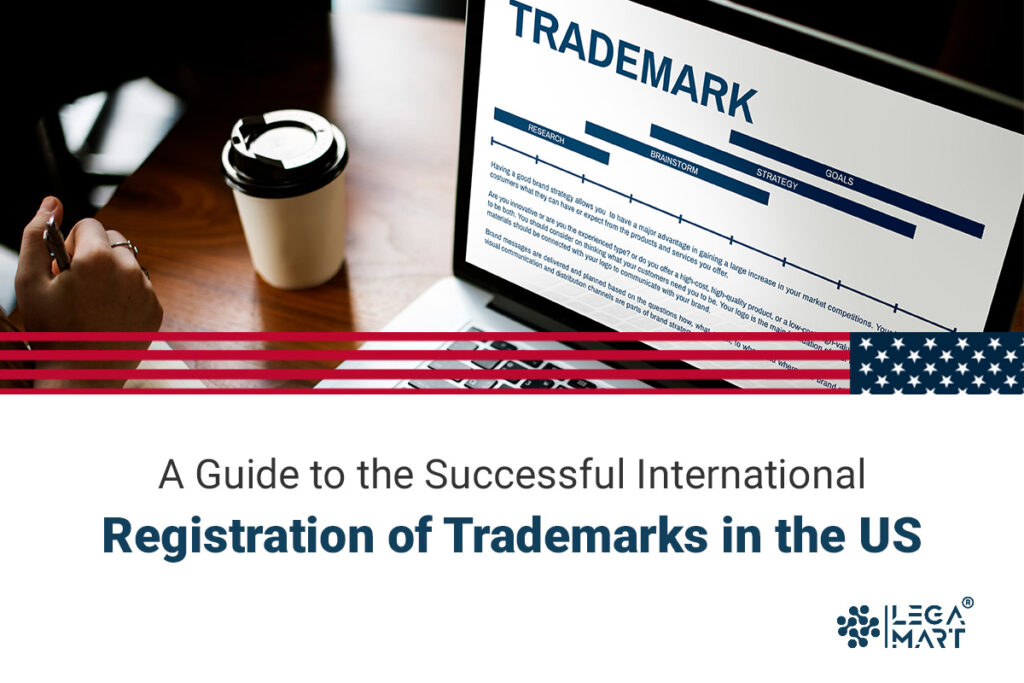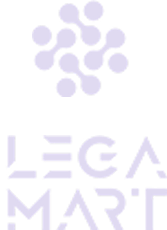- What to do before filing a trademark application in the US
- Type of trademark application in the US
- How to File a Trademark Application Online in the US?
- Trademark registration process
- Maintaining Your Trademark Registration
- International Trademark Application
- International Trademark Search Database
- Benefits of International trademark registration
- Fees for International Registration of Trademarks
- Timeline International Trademark Registration
- International Trademark Registration Procedure
- How long does the trademark last?
I was about to fail my first exam in law school. Reading the questions again, I glanced at the other students in the hall, writing as if a thief was chasing them with a pistol.
And me? I started calculating how much it would cost to set up a nice little bakery downtown when the university board kicked me out! What would I name my bakery? “Stop n’ Chop?”
No, that was too common. I decided on something more fanciful, like “Grover Pastries.” Maybe if my business succeeded, I could file a trademark application for my brand someday. Grover Pastries ®. And then, I would make millions of dollars and eventually register my trademark internationally. Bingo! Now, all I had to do was read all this, open my bakery, and live my dream life.
As time passed, sketches of pastries began to appear. “Grover Pastries” wasn’t just a name anymore; it was a dream. As the aroma of imaginary pastries filled my senses, the significance of trademark protection whispered in my ears.
10 Myths About Registering a Trademark in the US Internationally
The international registration of trademarks, particularly in the United States, is a multifaceted process often shrouded in myths and misconceptions. In the realm of AI & Data-Driven Insights and Cross-Border & International Law, understanding these complexities is crucial. Here are ten common myths and the corresponding detailed explanations to dispel these misconceptions:
Myth 1: One Global Trademark Registration Covers All Countries
Contrary to popular belief, there is no unified global trademark registration that guarantees protection in all countries. Instead, trademarks are contingent on a country-by-country basis. In order to attain international security mechanisms like the Madrid System, which streamlines the process of registering trademarks in multiple countries by filing a single application are preferred. This international framework facilitates the process, minimizing redundancies and inefficiencies in the trademark registration process. Section 44 of the Lanham Act (15 U.S.C. § 1126) states that trademark registration in the United States does not confer any rights or privileges extraterritorially. In re Schering Corporation, 329 F.2d 34 (C.C.P.A. 1964), the United States Court of Customs and Patent Appeals held that trademark protection is territorial in nature, meaning that a trademark registration in one country does not confer protection in other countries.
Myth 2: A Trademark Registration Lasts Indefinitely
It is generally assumed that trademark registration is a one time task. However, trademark registrations have a limited lifespan. In the U.S., registrations are valid for a period of ten years, with opportunities for renewal. The renewal periods for trademark registrations vary in other jurisdictions, making it imperative for trademark owners to remain vigilant in maintaining their registrations. The Lanham Act (15 U.S.C. § 1058) in the United States is often referred to in this regard, as it governs the duration and renewal of trademark registrations. In re E.I. du Pont de Nemours & Co., 476 F.2d 1357 (C.C.P.A. 1973), the United States Court of Customs and Patent Appeals held that trademark registrations in the United States are valid for a period of ten years and are subject to renewal.
Myth 3: A Trademark Registration Gives Worldwide Protection
A prevalent misperception is that registering a trademark automatically grants international protection. In actuality, the scope of protection is limited to the jurisdiction where the trademark is registered. In order to secure protection in other countries, separate applications must be filed in each respective jurisdiction. Section 22 of the Lanham Act (15 U.S.C. § 1141) states that trademark registration in the United States does not confer any rights or privileges extraterritorially. The concept of territoriality is an essential principle of trademark law. In the case of Steelex Industries, Inc. v. Nonwoven Products Co., 846 F.2d 996 (4th Cir. 1988), the United States Court of Appeals for the Fourth Circuit held that the scope of trademark protection is limited to the jurisdiction where the trademark is registered.
Myth 4: Trademark Registration Guarantees Immediate Rights
Another misconception is that trademark registration grants you immediate right to it. However, registering a trademark doesn’t guarantee immediate rights to it. In the U.S., trademark rights are primarily acquired through actual use in commerce, and registration enhances those rights. In re Nantucket, Inc., 677 F.2d 996 (C.C.P.A. 1982), the United States Court of Customs and Patent Appeals held that trademark rights in the United States are primarily acquired through actual use in commerce. Trademark registration enhances and solidifies those rights, but it is not necessary to acquire them. Section 1(a) of the Lanham Act (15 U.S.C. § 1051(a)) states that trademark rights in the United States are acquired through use of a mark in commerce. Some nations operate on “first-to-file” systems, which grant rights to the first to register a trademark, irrespective of use.
Myth 5: Trademarks and Copyrights Are the Same
The line of distinction between trademarks and copyrights have been blur for a lot of people. Trademarks protect symbols, names, and logos used to identify goods or services, while copyrights protect original creative works. They serve different purposes and have distinct application processes. The Lanham Act protects trademarks, while the Copyright Act protects copyrights. The United States Supreme Court in case of Feist Publications, Inc. v. Rural Telephone Service Co., 499 U.S. 349 (1991), held that trademarks and copyrights are distinct forms of intellectual property that protect different things. Trademarks protect symbols, names, and logos that identify the source of goods or services, while copyrights protect original works of authorship, such as literary, artistic, and musical works.
Myth 6: Registration Is Costly and Complex
It is widely assumed that registering a trademark is hectic, expensive, and time-consuming process, but the cost of registration varies from country to country. While registering a trademark can involve costs, they are often manageable. Moreover, with proper guidance and the assistance of experienced professionals, the complexity of the process can be effectively managed. Seeking professional assistance is often a prudent investment to ensure a smooth and efficient registration process. The USPTO has published a number of resources to help trademark applicants navigate the registration process, including the Trademark Manual of Examining Procedure (TMEP) and the Trademark Electronic Application System (TEAS).
Myth 7: Using “TM” or “®” Is Optional
Although not legally mandated using the symbols “TM” (for unregistered trademarks) or “®” (for registered trademarks) is strongly recommended.Using these marks effectively informs others of your trademark claim and plays a pivotal role in enforcement actions and litigation. In case of re Certain Personal Computers and Components Thereof (1992), the United States Court of Appeals for the Federal Circuit held that using the “TM” symbol is not required to establish trademark rights, but it does provide certain benefits, such as putting others on notice of the trademark claim and creating a presumption of ownership.
Myth 8: A Registered Trademark Cannot Be Challenged
Registered trademarks can be challenged if someone believes they infringe on their rights or if they were registered fraudulently. Maintaining and enforcing trademark rights is vital to protecting one’s intellectual property assets. In case of Taco Cabana, Inc. v. Two Pesos, Inc. (1992), the United States Supreme Court held that registered trademarks can be challenged on the grounds of trademark infringement and trademark dilution.
Myth 9: Trademark Registration Is Automatic After Application Submission
It is assumed that after applying for registration, the responsibility shifts. But this conception is entirely false. Trademark applications go through stringent scrutiny, and approval is not guaranteed. Refusals can occur for a variety of reasons, including but not limited to similarity to existing marks, descriptiveness, or other legal issues. Section 12(a) of the Trademark Act sets forth the grounds for refusal of a trademark application. In re E.I. du Pont de Nemours & Co. (1949), the United States Court of Customs and Patent Appeals held that trademark registration is not automatic and that the Trademark Office has the authority to refuse applications for a variety of reasons, including similarity to existing marks, descriptiveness, or other legal issues.
Myth 10: You Can Register a Trademark for Anything
Not all words, symbols, or phrases are eligible for trademark protection, contrary to popular assumption. Trademarks must fulfil specified requirements, such as distinctiveness and not being descriptive of the goods or services they represent. In United Drug Co. v. Theodore Rectanus Co. (1918) the United States Supreme Court held that trademarks must be distinctive in order to be eligible for registration.
To summarise, a proper understanding of the intricacies involved in trademark registration internationally, particularly within the United States, is indispensable for businesses and individuals seeking to safeguard their brands on a global scale. Dispelling the tenacious myths surrounding trademark registration can prove invaluable in navigating the intricate path towards acquiring and maintaining trademark rights. Given the complicated and ever-changing nature of trademark law, consulting with trademark practitioners or experienced attorneys is strongly advised.
What to do before filing a trademark application in the US?
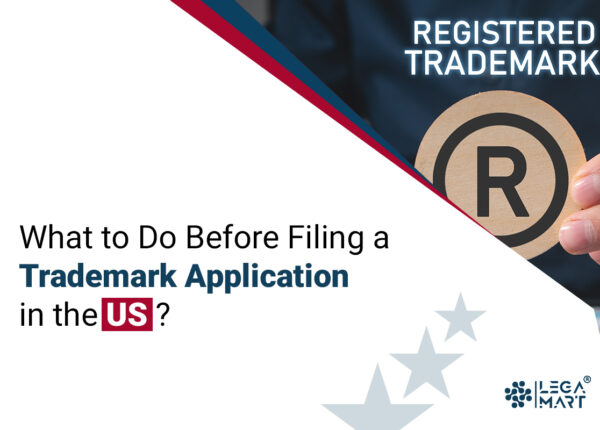
Before filing a trademark application in the US, you must choose a mark, such as a brand name or logo, that will later be registered by the United States Patent and Trademark Office (USPTO). The USPTO specified two important factors to consider when selecting a mark: the likelihood of confusion and mark strength.
When your mark is similar to another company’s, consumers may mistake your product for the other company’s. Similarities include logos, designs, fragrances, and tastes, among other things.
For example, if the mark “TWEEDLE” is chosen for a cologne you created while a body spray with the mark “T.WIDYL” is already on the market, consumers who are new to wearing “T.WIDELY” may mistake the cologne you created for “T.WIDELY” the next time they want to buy it. And if both products have similar fragrances, it will take a trained nose to tell the difference.
The greater the likelihood of confusion between your mark and an existing product, the greater the likelihood of the USPTO rejecting your trademark application.
Also, the strength of a mark is determined by how easy or difficult it will be to protect it. Generic words and descriptive terms should not be used for trademark applications. Fanciful words (those with no known dictionary meaning, such as “Indomie”) and arbitrary words (those with dictionary meanings but used as marks for products unrelated to their meanings, such as “potato” for shoes) are the important marks and the easiest to protect if infringed. As important as trademarks are in words, they are equally important in the fashion industry.
Before proceeding with the trademark application, search the USPTO database for similar trademarks. If no marks identical to yours appear in the search results, you’re good to go.
If you are registering a trademark in Italy, understanding the types of trademarks, the cost of registering an intellectual property and the governing authority and portal through which you need to register your trademark is the first and crucial step.
Type of trademark application in the US
In the United States, there are two main types of trademark applications: use-based and intent-to-use-based.
A use-based application is filed when the trademark is already used in commerce. The applicant must provide evidence of this use, such as a specimen of the mark as it is used on the goods or services and a statement of the date of first use of the mark. The application process for a use-based trademark typically takes about 12-18 months from the date of filing to registration.
An intent-to-use application is filed when the applicant has a bona fide intention to use the trademark in commerce but has not yet begun using it. The applicant must provide a statement of the bona fide intention to use the mark in commerce but does not need to provide evidence of actual use. The application process for an intent-to-use trademark typically takes 24-30 months from filing to registration.
In addition to these two types of applications, a few other trademark applications are available in the US.
- TEAS Plus Application: It is filed through the USPTO’s online system. The applicant must submit a specimen of the mark, a statement of first use, and a list of goods/services. The process is faster than the traditional application.
- TEAS Reduced Fee (TEAS RF) Application: This is a cheaper version of the TEAS Plus application, but it requires the applicant to agree to certain restrictions, such as receiving all communications from the USPTO via email.
- Madrid Protocol Application: This application allows applicants to file a single application to protect a trademark in multiple countries that are members of the Madrid Protocol.
No matter which type of application is filed, all trademark applications are examined by an examining attorney at the USPTO to determine if the mark is eligible for registration. Factors considered in this examination include whether the mark is likely to be confused with other existing trademarks, whether the mark is descriptive or generic, and whether the mark is primarily a surname.
Once the examination is complete, the applicant will receive a notice of allowance or a notice of rejection, depending on the outcome of the examination. If the mark is allowed, the applicant must submit a statement of use or request an extension of time to submit a statement of use, depending on the filed application type.
If the mark is registered, it will be published in the Official Gazette, a weekly publication of the USPTO. Once the mark is published, any party with any issues with the registration has 30 days to file an opposition. If no opposition is filed, or if the opposition is unsuccessful, the mark will become registered.
Tip: Before applying for trademark registration, you must check the trademark availability.
How to File a Trademark Application Online in the US?
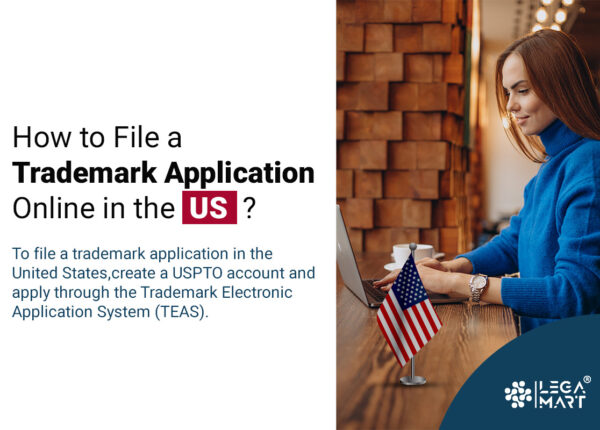
To file a trademark application in the United States, create a USPTO account and apply through the Trademark Electronic Application System (TEAS). The TEAS standard, which has a higher processing fee and a shorter application procedure than the TEAS plus, can be used. Whether you use TEAS standard or plus, your processing fee will not be refunded if your trademark application is rejected.
You must indicate the “filing basis during the application process.” As of now, there are four different bases on the USPTO website:
- Use in commerce: When the mark is used to brand commercial goods and services.
- Intent-to-use: When you intend to use that mark for commercial purposes in the future.
- Foreign Registration: When the mark has been previously registered in another country.
- Foreign application: When you have applied for the registration of that mark in another country within six months before your US application.
The basis you select will impact your application later on, so exercise caution. Then, check the Trademark Status and Document Retrieval every six months to see how far your application has progressed. If you move or lose access to the email address you used during the application process, you must update your physical and email addresses on your USPTO account.
If the application meets basic filing requirements, the USPTO will forward it to an examining attorney who will review it for any defects within some months.
If your application is approved by the examining attorney, it will be published in the USPTO’s weekly “Official Gazette.” Any public member who opposes your mark registration within thirty days of its publication may file an opposition with the Trademark Trial and Appeal Board (TTAB). Feel free to dance a little if no one objects to your trademark.
Trademark registration process
At this stage, if you selected “use in commerce,” “foreign registration,” or “foreign application” as the basis for your trademark application, the USPTO will register your mark and issue you a certificate of registration.
After that, you need to file specific maintenance documents. Failure to do so can result in the cancellation or expiration of the trademark registration.
If you chose “intent-to-use” as your filing basis, the USPTO would send you a notice of allowance eight weeks after publishing your mark in its “Official Gazette.”
A notice of allowance “allows” you to use the mark for commercial purposes within six months from the date the notice was issued and file a Statement of Use (SOU). If you cannot commercially use your mark within six months, you can request an extension of six months.
Within two months of the USPTO approving your SOU, the USPTO will issue you a trademark registration certificate. Unfortunately, submitting an SOU does not guarantee that it will be approved. In the latter case, your processing fees will not be refunded.
Maintaining Your Trademark Registration
While filing relevant documents, you must also check the trademark registration status every year, mainly when the trademark is 5,6,9 and 10 years old.
International Trademark Application
If you want to protect your trademark in countries other than the United States, for example; trademark registration in Italy, UK or UAE you can either register the trademark separately in each of these countries separately or file an application with the WIPO for international trademark protection under the Madrid Protocol.
But first, what is the Madrid system?
It is a cheaper and more convenient solution for registering and maintaining trademarks worldwide. With only one application, you can obtain protection for your trademark in up to 128 countries worldwide.
You can use the system only if you have an established personal or commercial connection with any of the 128 countries covered, i.e., you must live in, be a citizen of or conduct business in that country.
Rules Guiding International Trademark Application
WIPO specifies two rules (more like requirements) that must be followed when applying for international trademark protection. They are:
- You must submit your application through the IP office of any countries or regions registered under the Madrid convention with which you have a personal or commercial connection. That IP office is regarded as your “IP office of origin.”
- You must have applied for or obtained a domestic trademark in countries covered by the Madrid system. You must submit your application to the IP office of the same country or region where you obtained or are applying for the domestic trademark.
International Trademark Search Database
Before submitting your international application, double-check that your mark will not infringe on any existing trademark anywhere in the world. Of course, you can file without running the background check, but you risk being sued for trademark infringement.
The most reliable source of this kind of information is the global brand database of WIPO itself. You can conduct any trademark search by text or pictures and view the displayed results at the speed of light.
Filing Your International Application
You can file an international application in three ways.
- Downloading and manually filling out the MM2 form
- It is available in English, French and Spanish versions.
- Using the Madrid Application Assistant
WIPO recommends this tool because it imports all information concerning your basic mark from the database of your IP office of origin into the electronic MM2 form.
The Assistant is faster and more efficient and reduces the risk of filing irregularities that hamper the approval and registration of your mark. Once it has completed the application, it provides you with the PDF version of the completed application that you will submit to your IP office of origin.
Using the Madrid e-filing system
If the Application Assistant is not supported in your region, you can use the e-filing system instead. It operates similarly to the Assistant.
All interested candidates whose IP office of origin is USPTO must, in addition to the form MM2, complete and submit a form MM18, which specifies how they intend to use the mark.
Regardless of which of the three ways you use, you must file your international application with your IP office of origin. From there, the application will be forwarded to WIPO after it has been approved by the domestic IP office. You cannot send your application to WIPO directly.
Benefits of International Trademark Registration
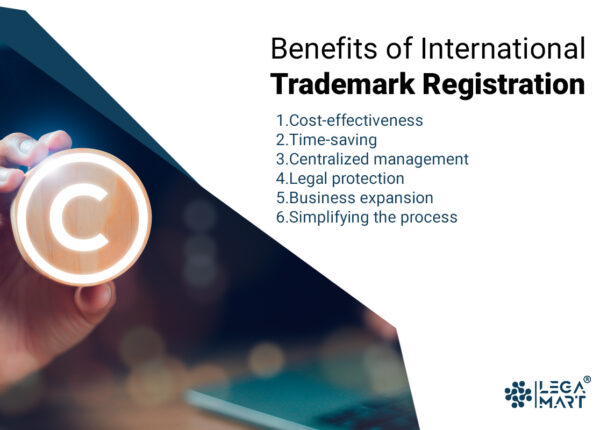
International trademark registration, also known as the Madrid System, is a system that allows trademark owners to file one application and pay one set of fees to protect their trademark in multiple countries that are members of the Madrid Protocol. In addition, the Madrid e-filing system is an online system that allows trademark owners to file and manage their international trademark applications and registrations.
The benefits of international trademark registration through the Madrid e-filing system include the following:
- Cost-effectiveness: The Madrid System offers cost-effectiveness by allowing the trademark owner to file one application and pay one set of fees to protect their trademark in multiple countries. This eliminates the need to file separate applications and pay separate fees in each country, which can be quite costly.
- Time-saving: The Madrid System also saves time as it eliminates the need for the trademark owner to understand the various procedures and requirements of each country. The e-filing system also allows for easier management of the application and registration process, making it more efficient.
- Centralized management: The Madrid e-filing system allows for centralized management of international trademark registration. This means that all the applications and registrations can be managed from one location, making it easier for the trademark owner to keep track of the status of their applications and registrations.
- Legal protection: By registering a trademark internationally, the owner can legally protect it in multiple countries. This provides protection against infringement and helps prevent others from using a similar mark in those countries.
- Business expansion: The Madrid System allows businesses to expand into new markets more efficiently, as they can register their trademark in multiple countries at once. This can open up new opportunities for revenue and growth.
Franchising is a primary avenue for businesses looking to expand. Within this context, the significance of registering a trademark cannot be overstated. Beyond protection, registered trademarks can also become sources of royalty income, emphasizing the multifaceted benefits of the registration process. - Simplifying the process: The Madrid e-filing system simplifies the process of international trademark registration by providing a streamlined, electronic process for filing, managing and renewing applications. This makes registering their trademarks internationally easier for businesses of all sizes.
Trademark registrations play a critical role in IP due diligence during mergers and acquisitions, ensuring that all intellectual property assets are properly evaluated and protected. In this context, it offers clarity and assurance on brand ownership, reducing potential disputes and liabilities in the transaction
Trademark registration is one of the primary stages in managing the legal process of a start-up, where you need to name your business and add it the important documents needed to file for incorporation of the company. It also helps in smooth merger and acquisition of business as the IP due diligence.
- Language flexibility: The Madrid e-filing system allows for the filing of international trademark applications in the language of the country of origin of the applicant, and it also allows applicants to file their application in one of the two official languages of the WIPO (World Intellectual Property Organization) which are English and French.
Fees for International Registration of Trademarks
All fees for international trademark registration must be paid directly to WIPO. You must pay the basic fee for international registration, an additional fee for each country where you want to use your mark, and an additional fee for each class of goods and services that exceeds three items.
The basic fee for a black-and-white mark under the Madrid system is 653 Swiss francs, while the basic fee for a coloured mark is 903 Swiss francs. Additional fees vary depending on the countries where you want your trademark to be protected.
To determine the total fees you should pay, use the “fee calculator” included in the form MM2.
WIPO provides four methods through which you can pay those fees.
- Your current WIPO account: Include the relevant details of your current WIPO account in the form MM2. Alternatively, you can submit a document requesting WIPO to debit your current WIPO account fees. The Madrid online payment system also allows you to pay the fees easily.
- Bank transfer: After transferring the total amount you intend to pay to WIPO’s official bank account, indicate your payment details in part C of the Fee Calculation Sheet in Form MM2. Remember to provide those details before you send your form to your IP office of origin. If you don’t, your international application will be delayed. WIPO might also send you a notice of irregularity, which can take some time to sort out.
Credit card payments
You can use this option only in special instances. For example, if you’re filing your international application for the first time, you cannot pay your processing fees with your credit card.
But when you have registered your mark and want to expand the scope of the mark’s coverage, you can pay the additional fees using your credit card. Credit card payments are also accepted by candidates who want to renew their trademarks.
Timeline International Trademark Registration
The process for obtaining international trademark registration can be complex and time-consuming. However, it typically follows the following timeline:
- Filing the international trademark application: The first step in obtaining international trademark registration is filing an international application through the World Intellectual Property Organization (WIPO) under the Madrid Protocol. This application must include a list of the goods and services for which the mark will be used and a representation of the mark itself. The application fee for filing an international trademark application can vary depending on the number of classes of goods and services included in the application.
- International Search Report: After the international trademark application is filed, WIPO will conduct an international search to determine if the mark is similar to any existing marks. The International Search Report will be issued within 16 months of the international application filing date.
- International Publication: Once the International Search Report is issued, the mark will be published in the WIPO Gazette of International Marks. This publication allows any interested party to file an opposition to the registration of the trademark.
- National Phase: After the international publication, the international trademark application enters the national phase, where protection is sought in each country. The applicant must then file a national application in each country and pay any required fees. The national phase typically begins within 30 or 31 months of the international application filing date.
- Examination of National Application: Each country has its trademark office and examination process. The examination process will check if the mark is registrable to ensure that it does not conflict with any existing marks and meets the requirements of that country’s trademark laws.
- Grant of National Registration: If the national application is accepted, the trademark office will grant the registration and issue a certificate of registration. The grant of national registration can take several months to several years, depending on the country.
- Renewal: International registration must be renewed every 10 years once the mark is registered. The renewal process can vary depending on the country but typically involves paying a renewal fee and submitting a declaration of continued use of the mark.
- Maintenance: Once the mark is registered, it is essential to maintain the registration by continuously using it and renewing it as required. The registration may become vulnerable to cancellation if the mark is unused for a certain period.
In summary, the process of obtaining international trademark registration involves filing an international application through WIPO, conducting an international search and international publication, entering the national phase in each country where protection is sought, examination of the national application and granting of national registration, renewing and maintenance of the mark.
International Trademark Registration Procedure
When the international application is accepted by WIPO, the official trademark registration procedure begins. This process is similar to the one your basic mark application went through at the national level. WIPO will review your international application to ensure that it is error-free and that you have met all requirements.
If some defects are found in your application, you will be notified via email and instructed to correct the defects as soon as possible. What happens if you refuse to make the necessary corrections? Your application will be considered abandoned. And no, WIPO will not refund your processing fees.
Assuming all goes well and your application is published in WIPO’s International Trademark Gazette, WIPO will forward a copy of it to the intellectual property office of each country in which you requested to have your trademark protected.
Those IP offices will compare your mark with the existing trademarks in their respective countries to determine if there are any potential disputes with trademark owners. If they feel your mark is safe to protect, they will publish it in their national gazettes.
Again, this mark of yours will be open to scrutiny and opposition from the public for over a year in those countries, after which it will be granted protection (if no successful opposition arises).
Now that the process is over, all you have to do is monitor and enforce your trademark. As with legal matters, you will need a trademark attorney to help you.
How long does the trademark last?
Once a trademark is registered through the international trademark registration procedure, it will last for 10 years from the registration date. In the UK for example, trademark registration provides a strong monopoly which can last forever provided certain requirements are observed, including trademark renewal. After this initial 10-year period, the trademark can be renewed indefinitely for 10 years each. However, it’s important to note that the renewal must be done before the expiration date of the current registration.
The international trademark registration procedure is done through the Madrid System, administered by the World Intellectual Property Organization (WIPO). The Madrid System allows for filing a single international application to protect a trademark in multiple countries that are members of the Madrid Protocol. The application must be filed through the trademark office of the applicant’s home country, and it can then be designated to other member countries in which the applicant wishes to seek protection.
In concluding our discussion of trademarks, it’s imperative to note that this is but a mere facet of the vast intellectual property landscape. Beyond trademarks, the IP domain encompasses a myriad of critical elements like patents, which protect scientific inventions, processes, and formulas.
In case you need help registering your intellectual property in the US, you can rely on LegaMart lawyers, who are specialized lawyers who can be reached within minutes. Rest we have well-crafted, simple-to-read and updated articles to answer all your intellectual property questions.
Can a foreign company register a trademark in the US?
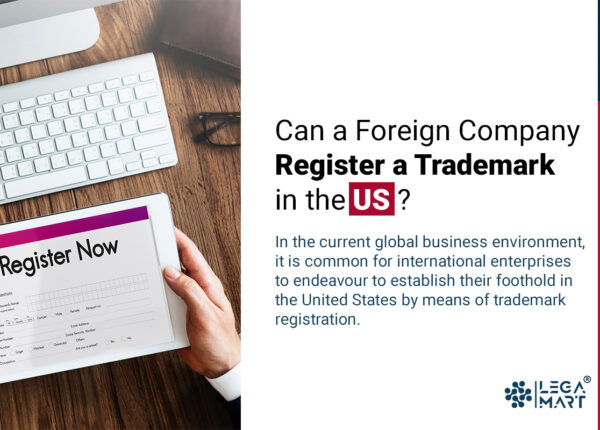
In the current global business environment, it is common for international enterprises to endeavour to establish their foothold in the United States by means of trademark registration. Registering a trademark in the United States presents a multitude of benefits, encompassing legal safeguarding, brand acknowledgment, and prospects for market expansion. A thorough comprehension of the legal framework and procedural prerequisites is imperative for foreign entities to effectively navigate the intricate terrain of U.S. trademark registration. The short answer is yes, foreign companies can register trademarks in the United States, but the process involves certain considerations and steps.
- Use in Commerce: For trademark registration in the U.S., foreign companies must demonstrate “use in commerce”, by utilising the trademark on goods or services within the country. This requirement can be fulfilled by either the foreign company, its U.S. subsidiary, or licensee.
- Appointing a U.S. Attorney: The United States Patent and Trademark Office (USPTO) highly advised international applicants to employ a U.S. attorney who is authorised to practise in the U.S. An attorney can provide guidance, navigate the complex application process, and ensure compliance with U.S. trademark laws.
- Foreign Priority Claims: Certain international companies may be eligible to claim priority by virtue of prior trademark registrations in their home countries. This can streamline the registration process and safeguard the trademark in the U.S.
- Registration Process: In the United States, there are many stages involved in registering a trademark including conducting a thorough trademark search, filing an application, responding to any Office Actions, and maintaining the trademark through renewals.
- Enforcement: In order to avoid infringement and preserve their exclusive rights, international companies must proactively enforce their trademark rights in the United States after registering.
Recent Rule Change: U.S. Legal Representation Requirement
Foreign companies must take into account the recent rule change implemented by the USPTO on August 3, 2019. This change mandates that all international entities, which encompass businesses headquartered outside the United States, must be represented by a U.S.-licensed attorney authorised to practise in U.S. for all trademark-related matters, with limited exceptions. Consequently, foreign companies must appoint a U.S.-licensed attorney to act on their behalf when applying trademark applications and managing ongoing correspondences with the USPTO.
Conclusion
The registration of trademarks by foreign companies in the United States is indeed possible. However, this process is complex and involves specific legal requirements, especially considering the recent rule change that mandates the need for U.S. legal representation. It is highly advantageous, and often mandatory, for foreign entities to seek the guidance of an experienced intellectual property attorney when navigating the intricacies of U.S. trademark registration. To ensure a successful trademark registration and protect intellectual property rights while expanding into the U.S. market, it is crucial to have a comprehensive understanding of the legal framework, select the appropriate filing basis, conduct thorough searches, and diligently maintain the trademark.
Uncover the steps and procedures for immigration to different nations, with a focus on Turkey to Norway and US to Portugal, in Legamart’s insightful articles.

